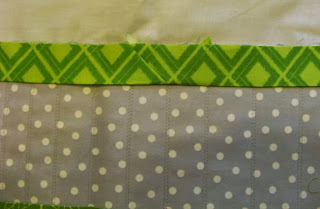Bake muffins, of course!
At least that's what I did.
The wind was blowing and the temperature dropping as arctic cold pointed it's icy finger right at Lincoln, Nebraska! We didn't even get a blanket of beautiful, white snow to gentle the harsh view of barren trees and dying grass. Just wind. And cold.
Brrr....
I looked out through my window and shivered.
Definitely a day for baking. I decided against buttery, sugary, calorie laden cookies and pulled up my favorite muffin recipe. The recipe calls for buttermilk and fresh fruit, so I figured I'd at least get some calcium and good vitamins with my calories.
I split the recipe in half and made two batches. The kitchen warmed up, the house smelled heavenly, and I made a lovely mess while listening to country music on the radio.
Here's my recipe. It starts with a basic recipe to which you add your own favorite fruit.
Fruit Muffins with Buttermilk
I get 2 dozen muffins, but my ancient cupcake pans are smaller than the new muffin pans.
Start with this basic recipe. I've suggested some variations at the end.
INGREDIENTS:
- 1/2 cup butter or margarine, room temperature
-
1 1/2 cups granulated sugar
-
4 large eggs
-
1 teaspoon vanilla extract
-
3 cups all-purpose flour
-
1 teaspoon baking powder
-
1/2 teaspoon baking soda
- 1/2 teaspoon salt
- 1 cup buttermilk
- 1 cup of *prepared fruit (see variations below)
Cream butter and sugar till light and fluffy. Add eggs, one at a
time, beating after each addition. Blend in vanilla extract.
In a separate bowl, stir together flour, baking powder, baking soda, and salt.
Stir flour mixture into creamed mixture with a wooden spoon. Gradually add buttermilk stirring just enough to moisten the dry ingredients. *Stir in fruit.
Spoon batter into prepared cupcake or muffin pans, filling each cup 2/3 full. Sprinkle the tops with coarse granulated sugar.
Bake at 350 degrees for 20 - 25 minutes, or until a wooden toothpick inserted in the center comes out clean. Cool in the pan for 5 minutes. Gently move muffins onto a wire rack to finish cooling.
A FEW VARIATIONS:
Blueberry Muffins: *Add 1 cup of fresh or frozen blueberries. A teaspoon of grated orange or lemon peel is also delicious with blueberries.
Strawberry Muffins: *Add 1 cup of chopped fresh or frozen strawberries.
Apple-cinnamon muffins: Add 1 teaspoon of cinnamon to the flour mix. *Add 1 cup of freshly grated apple, skin included.
Pear-walnut muffins: Add 1 teaspoon of cinnamon to the flour mix. *Add 1 cup of chopped fresh pears and 1/4 cup of chopped walnuts.
Pineapple muffins: *Add 1 cup of drained, crushed pineapple.
Invent-your-own muffins: You get the idea, I'm sure. Toss in a cupful or your favorite fruit and add any flavorings you like. Be creative!
I think I'd like to try cinnamon-raisin with streusel topping. Maybe substitute brown sugar for half of the white sugar.
Oh, and zucchini! Wouldn't that be fun!
Dates? Might need to reduce the sugar a bit. Maybe with orange zest.
What else? Send your ideas to me here: klee2strings@gmail.com
Turn on some happy music and sing along as you fill your kitchen with warm, appetizing fragrances, and banish winter's chill from your home!
Stir flour mixture into creamed mixture with a wooden spoon. Gradually add buttermilk stirring just enough to moisten the dry ingredients. *Stir in fruit.
Spoon batter into prepared cupcake or muffin pans, filling each cup 2/3 full. Sprinkle the tops with coarse granulated sugar.
Bake at 350 degrees for 20 - 25 minutes, or until a wooden toothpick inserted in the center comes out clean. Cool in the pan for 5 minutes. Gently move muffins onto a wire rack to finish cooling.
A FEW VARIATIONS:
Blueberry Muffins: *Add 1 cup of fresh or frozen blueberries. A teaspoon of grated orange or lemon peel is also delicious with blueberries.
Strawberry Muffins: *Add 1 cup of chopped fresh or frozen strawberries.
Apple-cinnamon muffins: Add 1 teaspoon of cinnamon to the flour mix. *Add 1 cup of freshly grated apple, skin included.
Pear-walnut muffins: Add 1 teaspoon of cinnamon to the flour mix. *Add 1 cup of chopped fresh pears and 1/4 cup of chopped walnuts.
Pineapple muffins: *Add 1 cup of drained, crushed pineapple.
Invent-your-own muffins: You get the idea, I'm sure. Toss in a cupful or your favorite fruit and add any flavorings you like. Be creative!
I think I'd like to try cinnamon-raisin with streusel topping. Maybe substitute brown sugar for half of the white sugar.
Oh, and zucchini! Wouldn't that be fun!
Dates? Might need to reduce the sugar a bit. Maybe with orange zest.
What else? Send your ideas to me here: klee2strings@gmail.com
Turn on some happy music and sing along as you fill your kitchen with warm, appetizing fragrances, and banish winter's chill from your home!
Happy Baking!!
I think I'll bake bread tomorrow.
























